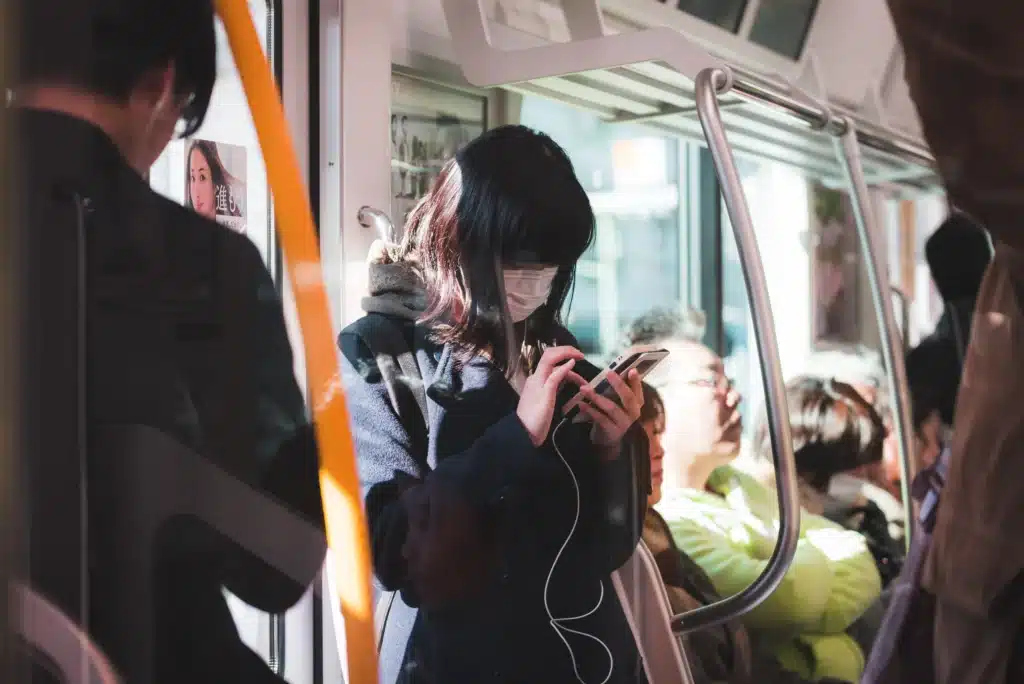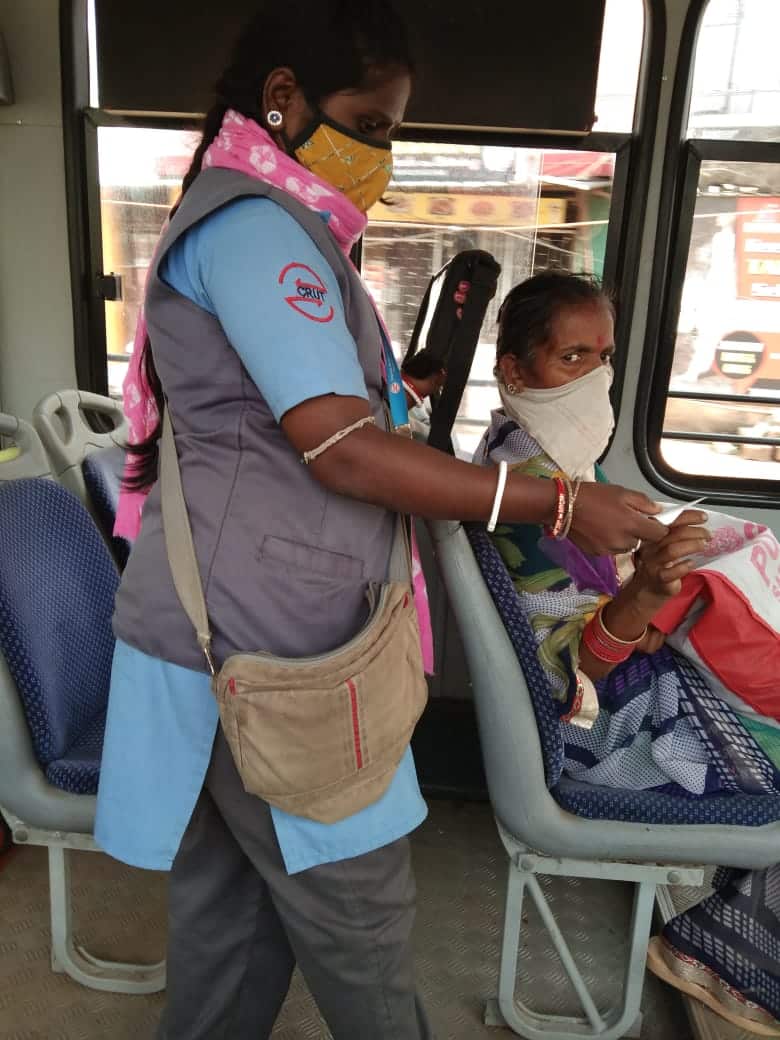Accessible and affordable public transportation plays a key role in keeping both people and economies moving. So when many countries around the world introduced restrictions to prevent the spread of the COVID-19 virus in 2020, they also made great efforts to ensure that public transportation continued operating.
By Courtney Tenz
Doing so was vital to the well-being of women, as more women use public transport than men. Making up 70 % of health care workers globally, women were at the frontline of the fight against the pandemic, and thus relied even more on functioning transit operations.
As Elsa Marie D’Silva, founder of save city, spoke about on a Talking Transport podcast episode, the dangers that women faced due to intimate partner violence at home increased during the pandemic. For some, public transportation remaining open could have proven a lifeline and city planners were in a unique position to recognize that. Authorities in several cities stepped up to respond in unique ways, whether through public awareness campaigns or through active assistance.
In Brazil, survivors of violence were able to use a transport service to get to the police, according to UN Women. The Port Moresby Safe City for Women and Girls Initiative in Papua New Guinea offered similar free and safe transport services for women survivors of violence. And in Tilburg in the Netherlands, survivors and other members of vulnerable groups were given public transport subsidies that enabled them to continue with their daily lives.
These subsidies came in response to the awareness that affordable access to public transportation keeps women earning, especially in lower and middle-income regions, where women might be more apt to work in the informal economy, something that COVID-19 related shutdowns disrupted tremendously.
Public transport and the path to healthcare access
Yet violence at home and financial disruptions weren’t the only issues women faced during the pandemic. Maintaining good health was a major concern for some more vulnerable members of the population; providing options that limited contact to other people was necessary. In Kabul, for example, transport was limited to four persons to prevent the spread of the virus. Madagascar made transport free and accessible 24 hours a day to nearly 5,000 pregnant women as part of their COVID-19 response.
Keeping the healthcare system up and running was also import to city planners. In cities like New York, Taipei, and La Paz, Bolivia, free usage of public transport was offered to health workers in order to keep the healthcare system functioning as needed.
Considering the needs of both healthcare workers and expectant parents was a step towards enhanced equity in the transit system and an acknowledgment of the essential role that accessible transport plays in people’s lives.
Providing safe public spaces
While initiatives like these helped to close a gender gap in public transportation, in some cities, long-held concerns that women and girls held about their personal safety gained newfound attention. With fewer people on the streets and in the subways, fears for personal safety became more heightened.
One study conducted by the Los Angeles Metro system noted that safety concerns were a consideration for women when using public transportation, with just 20 % of women respondents saying they felt safe using the city’s transport at night. Although that study pre-dates the pandemic, the slowdowns in mobility has shifted our understanding of the central role that public transportation plays in women’s lives. If women’s needs can be prioritized in emergency response plans developed in response to the pandemic, shouldn’t they be considered further now that mobility has begun to rise again?
That may mean maintaining some of the programs already implemented during the pandemic — such as free transport to the police for survivors of violence. It could also include a rethinking of the public spaces around public transportation; are bus shelters well-lit? Are there ways to shorten wait times at dark hours? The pandemic gave city planners a chance to rethink their transport in ways that make cities safer. Let’s keep that momentum going in future.
Further Reading:
GIZ (Deutsche Gesellschaft für International Zusammenarbeit) (ed.). Keeping Women Safe with Elsa Marie D’Silva. (2021). URL: https://womenmobilize.org/keeping-women-safe-with-elsa-marie-dsilva/ (Retrieved 25.2.22).
Shah, Sonal., Rajiv. R., Lokre, A. Final Report: Moving Towards Gender Equitable Public Transport Operations in a Post-Covid-19 world. (2021). URL: https://transport-links.com/download/final-report-moving-towards-gender-equitable-public-transport-operations-in-a-post-covid-19-world/ (Retrieved 25.2.22)
UN Women. Safe Cities and Safe Public Spaces: Global Results Report. (2017). URL for download: https://www.unwomen.org/en/digital-library/publications/2017/10/safe-cities-and-safe-public-spaces-global-results-report (Retrieved 22.2.22).
UN Women (2020). Covid-19 and ensuring safe transport with and for women and girls. URL: https://www.unwomen.org/en/digital-library/publications/2020/12/brief-covid-19-and-ensuring-safe-transport-with-and-for-women-and-girls#view (Retrieved 22.2.22).
Zhen, Sina. Rethinking Public Transportation for Women’s Safety and Security. (2021) https://sustainablemobility.iclei.org/rethinking-public-transportation-for-womens-safety-and-security/ (Retrieved 22.2.22).



